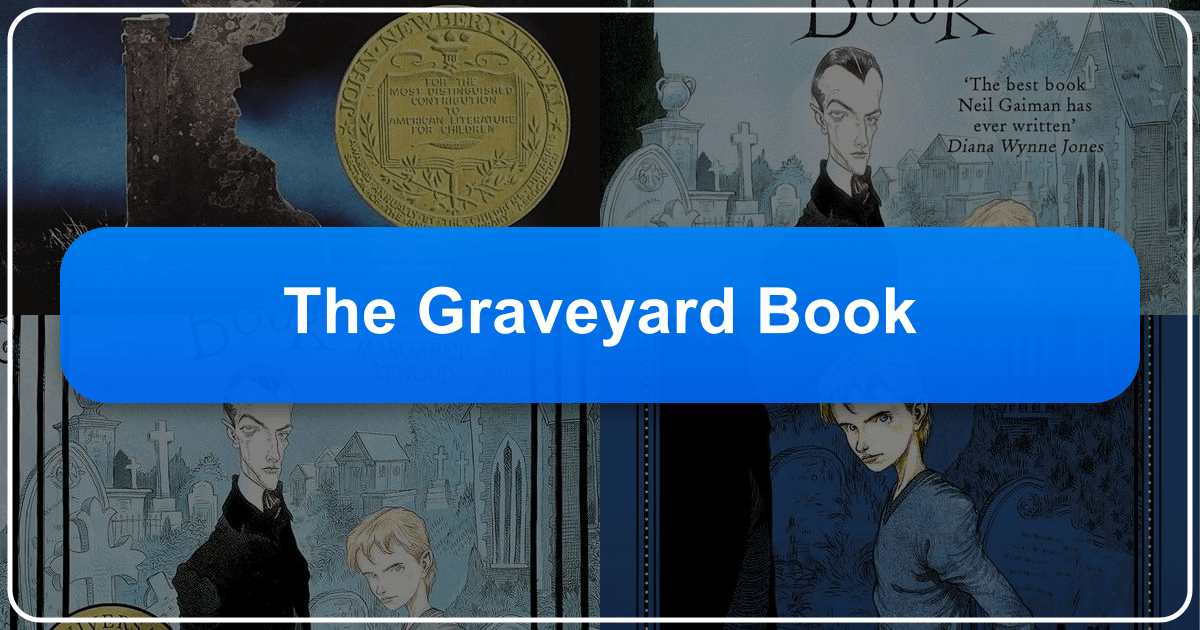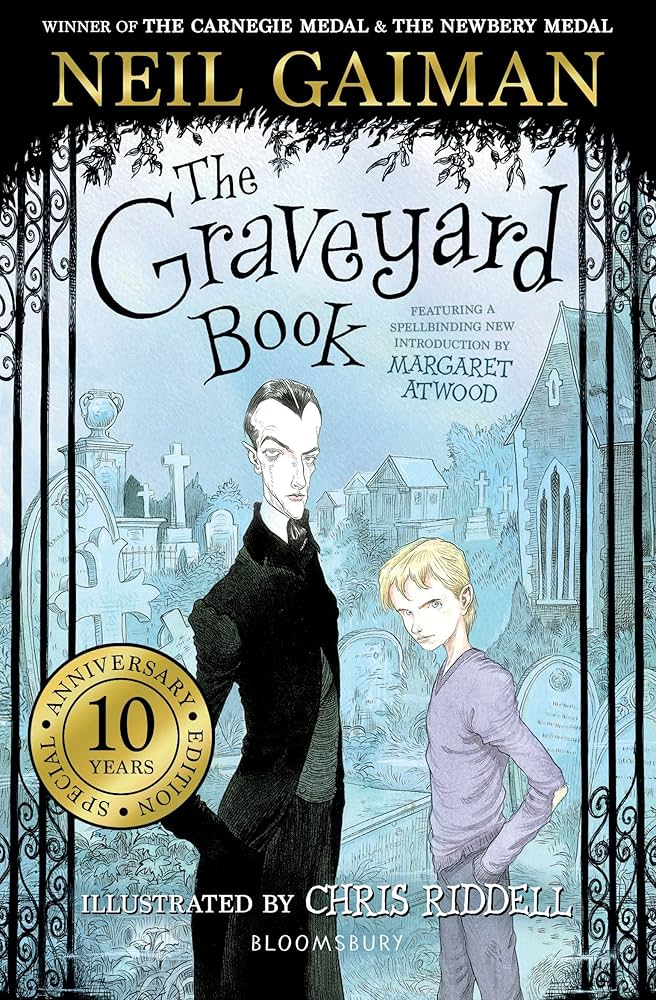The Graveyard Book: A Deep Dive into Neil Gaiman's Modern Classic

Neil Gaiman’s The Graveyard Book stands as a captivating modern classic, seamlessly blending fantasy, horror, and coming-of-age themes within its unique graveyard setting. This exploration delves into the novel’s various facets, examining its literary merit, genre classifications, authorial style, cultural impact, and educational value, aligning with common topics found on book review websites.
Genre and Critical Reception
The Graveyard Book defies simple genre categorization. While undeniably a children’s or young adult novel due to its target audience and thematic concerns, it also incorporates elements frequently found in other genres. The novel’s fantastical elements, such as ghosts, werewolves, and other supernatural beings inhabiting a graveyard, firmly place it within the fantasy genre. Simultaneously, the underlying suspense, the looming threat of the villain “Jack,” and the darker undertones of death and loss infuse the narrative with horror elements. These elements are not gratuitous, however; they serve to deepen the emotional resonance and heighten the stakes for the protagonist, Bod. The novel cleverly employs elements of mystery as Bod’s past and Jack’s motives are gradually revealed. Finally, the story’s overarching narrative arc follows Bod’s journey of self-discovery and maturation, making it a compelling coming-of-age story.

The novel’s critical reception has been overwhelmingly positive. It has garnered numerous awards, including both the Newbery Medal (US) and the Carnegie Medal (UK), a testament to its exceptional storytelling. Reviewers often praise Gaiman’s masterful blend of genres, his evocative prose, and the memorable cast of characters, both living and undead. The book’s ability to engage readers of all ages has contributed significantly to its enduring popularity and critical acclaim. Its accessibility for younger readers and its intellectual depth for older audiences make it a truly remarkable piece of literature.
Authorial Style and Inspirations
Neil Gaiman’s distinctive writing style is a significant factor in the novel’s success. His prose is lyrical and imaginative, creating a vivid and atmospheric world within the graveyard. His ability to craft compelling narratives with a deft touch, blending humor and darkness, is evident throughout The Graveyard Book. The pacing of the narrative is carefully managed, building suspense gradually while allowing time for character development and world-building. Gaiman expertly utilizes foreshadowing, subtle hints, and suggestive imagery to create an atmosphere of both wonder and unease.
While Gaiman himself hasn’t explicitly detailed the specific inspirations behind The Graveyard Book, the novel draws parallels to classic children’s literature, notably Rudyard Kipling’s The Jungle Book. Both narratives depict a young protagonist raised by unconventional guardians in a perilous environment, undergoing trials and adventures that contribute to their growth. However, Gaiman’s unique voice and style clearly distinguish his work, forging a narrative that is both homage and innovation.

The influence of classic ghost stories and fairy tales is also discernible. The graveyard setting, the ghostly characters, and the presence of both good and evil supernatural forces echo traditional folklore. However, Gaiman masterfully updates these classic tropes, injecting them with contemporary sensibilities and providing a nuanced exploration of morality and human nature. He manages to evoke the feeling of classic fairy tales while creating a completely original world and set of characters.
Neil Gaiman’s Other Works

Exploring Neil Gaiman’s other works provides further insight into his stylistic choices and creative tendencies. His extensive body of work, encompassing novels, short stories, graphic novels, and screenplays, demonstrates his versatility and consistent dedication to crafting compelling narratives. Works such as Coraline, American Gods, and Neverwhere showcase his aptitude for seamlessly weaving together various genres and creating unforgettable characters. Analyzing these works alongside The Graveyard Book provides a richer understanding of Gaiman’s artistic evolution and recurring themes. Each work displays a unique approach to storytelling, but common threads of imagination, suspense, and emotional depth weave through them all.
Reading Habits and Educational Value
The Graveyard Book is readily accessible to young readers, offering a captivating story filled with adventure and engaging characters. Yet, it also possesses a depth that resonates with older readers. This makes it a unique choice that can be enjoyed across various reading levels and age groups. This accessibility coupled with its complex themes makes it ideal for classroom discussions and shared family reading.
The novel offers significant educational value. It introduces young readers to the power of storytelling, the complexities of good versus evil, and the importance of friendship and loyalty. Themes of family, loss, and finding belonging in unexpected places are explored with sensitivity and nuance. The novel’s rich vocabulary and descriptive passages also improve literacy skills. Moreover, the novel stimulates critical thinking by encouraging readers to question the nature of good and evil, explore different perspectives, and consider the consequences of actions. The book facilitates discussions about the meaning of life, death, and the afterlife while engaging readers in moral dilemmas and complex relationships between characters. It is a rewarding and thought-provoking read that can spark deep engagement and conversation.
Cultural Impact and Adaptations
The Graveyard Book has achieved significant cultural impact since its publication. Its dual Newbery and Carnegie Medal wins solidified its position as a contemporary classic within children’s literature. Its widespread popularity has translated into translations in numerous languages, showcasing its universal appeal. The themes and characters of The Graveyard Book have resonated with readers globally, inspiring discussions about death, family, and identity. The novel has found a devoted following among young adults, who embrace its blend of fantasy, horror, and coming-of-age themes. Its continued presence on bestseller lists demonstrates its sustained appeal over time. The book’s enduring popularity is a testament to the quality of its writing and the timelessness of its themes.
While no major film adaptation has yet been produced, The Graveyard Book remains ripe for adaptation into various media. The imaginative world, intriguing characters, and suspenseful plot make it a compelling candidate for a film, television series, or even a stage play. The rich visual potential of the graveyard setting and the supernatural creatures lends itself well to visual media, and the story’s thematic depth allows for a thoughtful and engaging adaptation.
Libraries and Archives
The enduring nature of The Graveyard Book ensures its place in numerous libraries, both physical and digital. Public libraries worldwide include it in their collections, making it readily accessible to a broad readership. The book’s continued popularity and critical acclaim guarantee its place in digital library collections, providing wider access for patrons seeking engaging children’s and young adult literature. Rare book collections and archives may feature special editions or early printings of the novel. This accessibility within various libraries ensures that the story continues to reach diverse audiences. Its impact on readers, both young and old, suggests that the book will continue to be a valuable inclusion in libraries for years to come.
In conclusion, The Graveyard Book offers much more than a simple adventure story. It’s a nuanced and multi-layered narrative exploring complex themes through a uniquely captivating lens, ensuring its continued relevance and enjoyment for readers of all ages. Its literary merit, award recognition, and cultural impact all contribute to its status as a modern classic, deserving of continued appreciation and exploration.